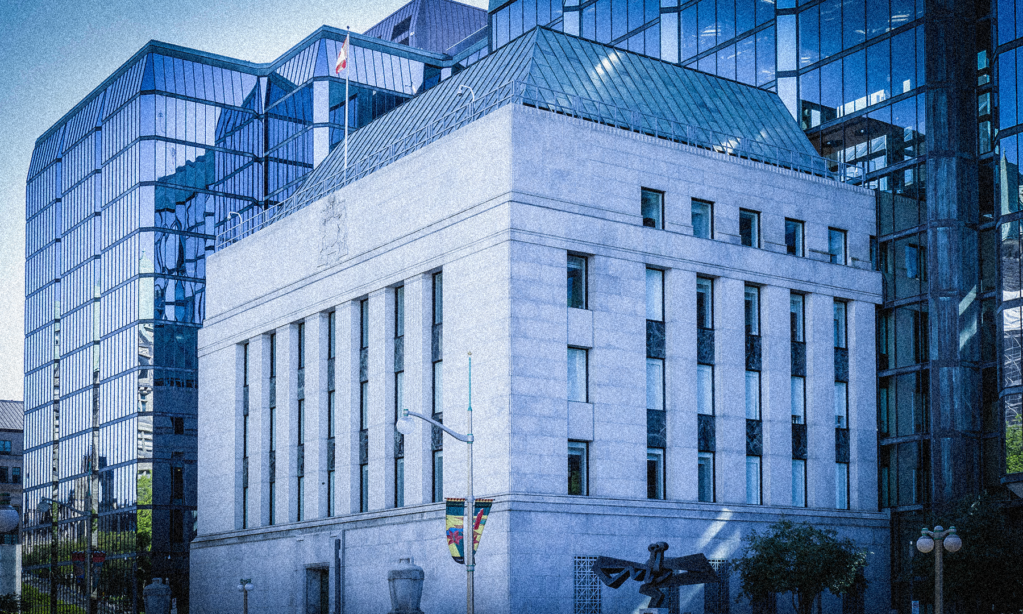To answer this question, we must first understand what causes inflation. Most economists will tell you that inflation is the result of excess demand or excess money—the “too much money chasing too few goods” analogy. But theoretically and empirically, this is rarely the case. The idea that inflation is demand-driven is a myth.
Nevertheless, it is a story that resonates deeply with many of our policy makers, including our central bankers. As such, it explains current policies to reduce inflation and their complete reliance on changes in interest rates, leaving no role for fiscal policy. Indeed, as we have witnessed over the last few months in Canada and around the world, interest rates have increased dramatically, including by a whole point in Canada on July 13. This is what I call “monetary policy dominance.”
We are told that such cumulative changes will dissuade consumers and businesses from spending, which in turn should increase unemployment (just a little, it is argued) and therefore reduce inflation and result in an economic soft landing. This is the demand-driven explanation of inflation: curtail demand by raising interest rates, and inflation should come down with little impact on economic activity and labour markets.
But the chorus of those doubting this scenario is growing, and many economists are now warning about the inevitable collapse of the economy and the coming recession. Moreover, some are pointing out, rightly, that higher interest rates can contribute to higher inflation by increasing borrowing costs that are passed unto consumers.
No doubt interest rates were too low and had to move back to some “normal” level, although I don’t know what that level would be. But putting this question aside, the burning issue remains whether the above story holds? In other words, does it work?
The simple answer is “no”—for a myriad of reasons. The way monetary policy filters through the economy is more complicated than the simple logic the demand-driven narrative presents, and central banks gain considerable advantages by muddying the waters and keeping the story simple. In reality, monetary policy is a rather blunt tool: one or two increases in rates won’t solve the problem of inflation. It usually relies on multiple increases in interest rates, the cumulative effect of which is to deflate the economy and create considerable unemployment.
And as David Macdonald recently demonstrated, rather convincingly, the Bank of Canada has never been successful in reducing inflation without causing severe economic distress to workers.
There is no such thing as a soft landing. The result is always a recession with lost jobs and high unemployment. The burden of fighting inflation has always fallen on the backs of workers. It is in this sense that the use of monetary policy to fight inflation is class-biased: this demand-driven story rests on the notion that we must raise interest rates and create unemployment to get inflation down. In fact, central bankers seem entirely prepared to sacrifice the livelihood of workers in order to attain the inflation target.
But is this really the only approach? Is there no alternative?
Allow me to offer a different story. One concerning the nature of inflation, its causes and its potential remedies that does not rely on sacrificing the well-being of workers. We need to shift the burden away from workers and share it with other players in the inflation war.
Inflation also eats away at the real value of wealth, which at these rates can be quite considerable. Most Canadians are not 'wealthy' or at least nowhere near the same level as, say, the 'one per cent.'
First, why fight inflation?
Economists and researchers at the Bank of Canada will tell you that it is important to fight inflation because of the economic burden it imposes on working Canadians: the price of goods increases, and Canadians can’t afford as much as before. Inflation debases the value of goods— or rather the money used to buy them—and thus creates consumption inequalities, with lower- income workers being disproportionately affected. This is undoubtedly true, but I suspect that the real reason central banks fight inflation is more sinister: they fight inflation on behalf of wealthy Canadians seeking to protect their wealth.
Indeed, inflation also eats away at the real value of wealth, which at these rates can be quite considerable. Most Canadians are not “wealthy” or at least nowhere near the same level as, say, the “one per cent.” Fighting inflation protects wealth and in this sense serves the purposes of the wealthy. Central banks may be independent in theory, but in reality they are quite dependent on the views of financial players, largely to maintain credibility. This begs the question: whose interests do central banks really serve?
Second, what causes inflation?
As stated above, central banks believe inflation is the result of too much demand. Monetary policy is then aimed at letting steam out of the aggregate demand balloon. I have written elsewhere on why this simply does not work, mainly because inflation is rarely the result of excess demand.
This is particularly the case now. Current inflation is the product of price increases in some raw materials resulting from the war and other disasters, or from supply chain bottlenecks, or from the lack of chips for computers and cars because of a shutdown of large parts of the world economy. None of these causes will disappear as a result of higher interest rates. How does an increase of 100 basis points help with the cutback in Russian oil? How will such increases resolve bottlenecks and get goods moving again? And how will these increases re-open factories and the economy? The answer is they won’t, and the truth is central banks know this and have said as much. But they still insist in increasing rates in order not to lose faith: financial players expect central banks to do something. So it becomes a game of credibility. Indeed, central banks were accused of being irresponsible for waiting so long before raising rates.
Third, what is the true nature of monetary policy?
If inflation is rooted in conflict, so is monetary policy. We tend to see interest rates as a cost—a cost of investment, a cost of production, a cost of borrowing. But they are more than that: they are also a source of revenue—a revenue for those holding various assets, like bonds, which pay a return. When interest rates go up, this also raises the return on those assets, and hence it is a gain for asset-holders.
In this sense, monetary policy is about income distribution: you raise rates, you increase the revenue to asset-holders while also creating unemployment, lost jobs and loss salaries. This is the very definition of social conflict. Hence, the true transmission mechanism of monetary policy is through income distribution and social conflict. This is the reality. It’s what one Canadian economist calls “the revenge of the rentier.”
Fourth, what role can fiscal policy play in fighting inflation?
As I indicated above, I suggest shifting the burden of fighting inflation away from workers, or at least spreading it around. After all, why would we expect workers to bear the biggest burden of this fight? In addition, much of the current inflation is profit-driven, which suggests that the current anti-inflationary policies are creating staggering levels of inequalities between the working class and the big corporations
This is where I think fiscal policy has a role to play. Fiscal policy is just as effective for fighting inflation, if not more so, than monetary policy. The biggest advantage is that fiscal policy can more specifically target the causes of supply-side inflation, rather than the blanket approach that is monetary policy. For instance, it could impose and raise taxes on profits, or even impose ceilings on price increases. I would go even further: given current levels of profits, why not an across-the-board rollback of prices by, say, five per cent? Draconian? Well, Laurentian University imposed a five per cent reduction on faculty wages. Why is it allowed for some but not for others?
Fiscal policy can also be used to control the price of pharmaceuticals, impose a sizeable tax on stock buybacks (or ban them altogether—but that’s another story), and increase taxes on the wealthy.
Most importantly, we need to expand output. Public investment toward a greener economy. Public banks, which I have been advocating for several years, can be used to transform our economies into green machines. These banks can also be used effectively to repair our failing infrastructure.
These policies should have minimal impact on workers. As a colleague recently wrote, all that is now required is the political will to act.







